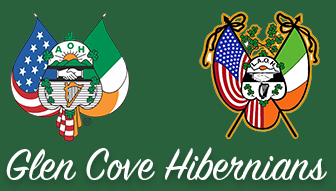 The 2009 Glen Cove St. Patrick’s Day Parade was led by Robert P. Lynch as Grand Marshal and Barney Lough as Aide. The parade was followed by a luncheon at Page One Restaurant in Glen Cove.
The 2009 Glen Cove St. Patrick’s Day Parade was led by Robert P. Lynch as Grand Marshal and Barney Lough as Aide. The parade was followed by a luncheon at Page One Restaurant in Glen Cove.

2009 Grand Marshal Robert P. Lynch with children Conor, Maura and Kieran.
After Parade Ceremony from AOH Division 8 on Vimeo.

























